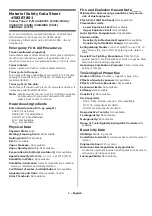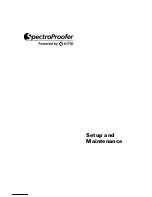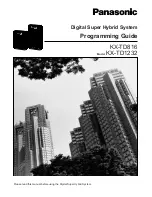
V-Track™ Automatic Long Range Vehicle ID System
Installation Guide
Page 1 of 20
P/N: 01538-001 Rev. G
1.0
System Overview
The Keri V-Track™ System
1
is similar to the highway toll type systems such as
E-ZPass
®
2
or
FasTrak
®
2
in that they
both operate in the 900 MHz band. However, V-Track™ is much easier to install and far more tolerant of different vehicle
types and metal surroundings than the toll-authority type transponder. It is also far less expensive.
The V-Track™ Vehicle Identification System consists of a directional Exciter (EX-10 - consisting of an integrated
transmitter and antenna), which sends out a uniquely coded RF signal towards the vehicle. The Transponder (LRT-5) is
mounted on the vehicle's windshield. Once the Transponder enters the field and recognizes the coded signal, it "wakes up"
and transmits its ID number via a secure RF signal to a Receiver decoder (RXR-10). The Receiver can be located up to
100 feet (30M) away from the vehicle. The Receiver is supplied in a weatherproof enclosure for direct outdoor installation
or can be placed indoors, such as in a guardhouse, close to other electronic equipment. The Receiver outputs the decoded
data to an access control unit via standard data cabling. Systems are available that output data in either the standard Keri
MS format or in 26-bit Wiegand format. A second or exit lane can be added to the system by installing a second Exciter.
This Exciter is aimed down the exit lane in the same manner as the entrance lane’s Exciter.
Figure 1: Basic, Single-Lane Gate Controller
Installation and setup is made simple and easy through the use of the LRT-5 Transponder. The LRT-5 is equipped with an
LED that flashes Red when in the coverage area of the Exciter. The flashing Red LED indicates that it is in the Exciter
field and is shipping data to the RXR-10 Receiver.
1. This device complies with part 15 of the FCC Rules. Operation is subject to the following two conditions: (1)
This device may not cause harmful interference, and (2) this device must accept any interference received,
including interference that may cause undesired operation.
2.
E-ZPass
® and
FasTrak
® are registered trademarks of
E-ZPass
® New York and the Bay Area Toll Authority,
respectively.
20 F
eet
RXR-10
Receiver
EX-10
Exciter
Up
To 100 F
eet
LRT-5
Transponder
GATE

































